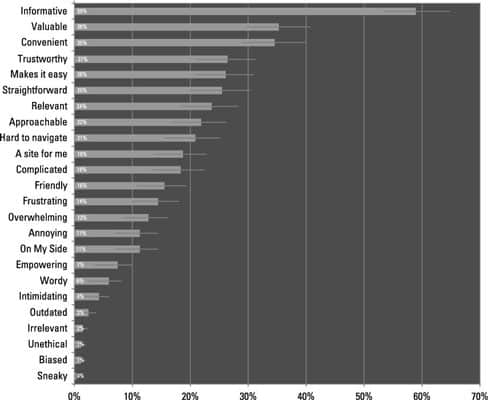In order to come up with an effective and well-rounded brand awareness campaign, it is important to identify and differentiate the various types of brand awareness. Previously, we’ve written an article explaining what is brand awareness. In this article, we will focus on the types of brand awareness, how to measure each type, and successful brand awareness examples of companies that have creatively put all the brand awareness types together.
The different types of brand awareness
These are different ways to help your customer identify your brand. Here are the different and common types of brand awareness.
Brand recall
What is brand recall? This is defined as a customer’s ability to elicit a brand name from their memory as a result of a prompt by a product category. If a consumer hears the word “airlines” (a product category in this case), it should bring specific brand names to mind.
Usually, a customer is able to recall at least 3 brands. A few can recall 7 brand names, and at least 1 to 2 brand names for product categories that they have low interest in. Brand recall shows that there is a strong link between the product category and brand. Brand recall is also referred to as unaided or spontaneous recall.
What determines the number of brand names that consumers can recall in a product category?
The number of brands that consumers can recall in a product category is determined by factors like the awareness set size, usage factors, brand loyalty, and situational factors. A consumer who frequently uses a product category, for instance, a mom who frequently uses detergents in her cleaning is highly likely to recall more brand names under the product category “detergents” than a man who outsources his cleaning services. For the mom, “detergents” will be a high-interest category, while to the man, it will be a low-interest category.
Brand recognition
Defining brand recognition is to help customer’s ability to differentiate a brand when in contact with it. The customer need not remember exact brand names. But when a brand name is given, the customer is able to state the product or product category, for instance.
Brand recognition can also happen through other features like slogans, packaging, logos, and jingles. Icing on the cake – most of these are tools, like a logo maker. It is also known as aided brand recall.
Brand recognition is an indication of the fact that a brand is reaching its target market. A larger number of customers could easily recognize a brand when aided when compared to accurately remembering a brand name when they only have the product category.
Top-of-mind awareness
What exactly is top-of-mind brand awareness? This is defined as the first brand that comes to a customer’s mind when they are asked an unprompted question about a product category. It is a response that is “off the top of your head”.
When the same concept is applied to a larger group of consumers, it is then referred to as the most remembered or most recalled brand name. Sometimes, there can be many recalled brand name.
Brands that consumers can remember “off the top of their head ” are highly likely to be considered during purchase. This is especially true where the consumer has to choose among competing brands and if there are positive associations with the brand. This usually happens in the cases of impulse buying or low-involvement categories.
Brand dominance
Here’s how we can explain brand dominance. This is when a consumer can only recall one brand name in a product category.
When a large number of people can only recall a single brand name in a product category, we talk of that brand name having become a household name. A household name is seen as an indicator of brand success.
Sometimes, brand names become synonymous with product categories. Such brands are said to be generic brands. A good example here are brands like Coke and Kleenex. Usually, when one wants a beverage, they are likely to ask for a coke.
While it might look like a great idea for a brand to end up being generic, it may work against a brand where competing brand names are introduced at the request of the generic brand name.
For instance, one may request for a Coke at a restaurant, but instead is presented with an alternative which may be cheaper, or “healthier” for instance.
How to test and measure the different brand awareness types
A variety of methods are used to measure the different types of brand awareness. The most common one is surveys. The surveys involve samples of customers whose knowledge of a brand or product category is tested.
The types of tests used for brand awareness:
1. Unaided recall tests
A consumer is presented with a product category. They are then asked to nominate brands. No clues or cues are given. These are usually tests for brand recall.
Calculating brand recall
You need to have conducted a survey in order to calculate brand recall. Divide the number of survey respondents who managed to correctly identify or suggest your brand by the total participants in the survey. Multiply the results by 100. This should convert it to a percentage.
Brand recall helps measure pre-purchase awareness.
More metrics like website traffic growth and net promoter score are required in order to measure purchase intent which can shed more light into purchases.
2. Aided recall tests
The consumer is prompted with a brand name and then asked whether they have seen or heard it before. The consumer might be asked to explain what they know about a brand or describe its visual features like packaging, logos or brand colors. These tests are used for brand recognition.
3. Other brand-effects tests
These are used in conjunction with brand recall tests. They may not be measures of brand awareness, but are used to indicate brand health. Let’s delve into a few of these.
Brand association tests
A good example that will help you understand brand associations is what can is referred to as “PR disasters”. If they get to social media, it could completely destroy a brand’s reputation. A brand association test is usually done via surveys and/or focus groups. These tests could be affected by response bias due to the pressure at the back of their minds to give maybe favorable answers to the direct questions. They could also be a bit costly, so you may need to have the surveys done online.
When done online, the respondents could be shown a brand logo and are asked to type the first word that they would use to describe the brand. Sometimes, the respondents may be asked to type up to 5 words. With online surveys, respondents may get brand names mixed. The number of brands that respondents can identify online are also limited. Here are Coke brand associations.
Search data is also a good source of brand association information. This could be data from search terms on Google, and on Google Trends. You can check out related topics and queries on Google Trends.
Brand attitude
This is simply what customers feel or think about your brand. Brand attitude can be described via words like favorable, unfavorable, or neutral. To test for brand attitude, you need to have a set of statements that respondents agree or disagree with. The choices could range from strongly disagree to strongly agree. You can also test both general and specific concepts. You may want your brand’s favorability ranking well when compared with competition, this is why the test is performed.
Specific concepts that you may want to test include brand and product characteristics, as well as the experiences associated with the brand or product (these concepts are known as brand pillars, the attributes that you would like your brand to communicate). Brand pillars have to do with the value your customers feel that they get from your product/service, whether your customers feel that they trust your brand, and whether they feel that your product is of good quality.
It helps to find out how respondents arrived at the expressed views. Allow them to give this feedback using their own words. This will give further insights on what contributes attitudes towards your brand and the areas of improvement that you need to focus on.
Brand affinity analysis
This is an analysis of the words that are associated with a brand. Usually the set of words is presented to the respondents. It is classified into positive and negative terms. You then need to calculate and tabulate the responses. Here is an example:
Brand salience
An example of how brand salience is measured would be in supermarkets. Products are placed on a shelf each with equal shelf space. Customers are then shown photos of that shelf and asked to name the brands. The speed at which the consumers nominate a brand is what is referred to as visual salience. This is used as a test of a product’s visual identity (logos, packaging, and brand colors).
Examples of companies with the most successful campaigns
Looking at concepts and strategies is one thing, here are some of the most successful brand awareness campaign examples.
Dove’s “Campaign for Real Beauty”
This is one of the campaigns that is widely discussed in the field of marketing. It has been dubbed the campaign of the century. The campaign is more than a decade old, having began in 2004. This campaign explores beauty from a very different perspective, that beauty comes within. The models used in the campaign are women different body sizes and skin colors as well.
The “Campaign for Real Beauty” has taken many different shapes and forms. For instance, in 2013, “The Dove Real Beauty” sketches campaign was thoroughly successful.
Women were asked to describe themselves to a sketch artist who could not see them. The sketch artist would then draw the women. The same sketch artist would then draw the sketches of the same women based on a strangers description. Usually, the stranger’s description was more flattering. This was aimed at letting women know that they were more beautiful than they actually thought.
Another successful campaign was the “Choose Beautiful Campaign”.
Two doors were labeled, one “Beautiful” another “Average”. This was tested in different countries in the world and even translated into different languages. The underlying message? Beauty is a choice.
Watch Dove’s 2018 campaign here
This campaign has managed to be successful over the years as it has been able to touch on a sensitive matter that influences a woman’s self-esteem. They have been able to make women around the world feel more appreciated as they are not defined by societal standards. Using models who represent “normal” women, which contrasts with the thin models that are usually used in advertising, also contributed to the campaign’s success.
Old Spice’s “The Man Your Man Could Smell Like”
This is another unforgettable campaign, which actually saw an astounding increase in ROI. It began in 2010, just before the Super Bowl on YouTube, and a day after the Super Bowl on TV. It features Isaiah Mustafa, an actor. The 30-second ad focuses on the different possibilities when “your man smells like Old Spice and not a lady”:
The results:
- The ad went viral
- 75% of all the conversions in the men’s’ beauty products category
- Over 50% increase in sales
- Over 300% increase in traffic
- One of the most viewed YouTube Channels
- Old Spice became the number one body wash for men in the U.S.
- The ad won the 2010 Cannes Lions Film Grand Pix Award
- The ad won the Primetime Emmy Award for Outstanding Commercial
This success story does not end here. Mustafa would respond to fans’ questions sent via Twitter and Facebook. The responses were given via follow up YouTube videos. Over 180 videos responding to fans’ queries were posted on YouTube.
The results:
- 5.9 million views by the end of day one
- 40 million views by the end of week one
- YouTube subscriber base increased to 150,000 from 65,000
- Twitter and Facebook followers increased by 2700% and 800% respectively
- 125% increase in sales by end of June 2010
In 2013, Old Spice launched new products and created two more videos. The videos had over 7.6 million in two weeks.
We have seen the massive success of these two campaigns in the beauty industry, targeting largely male and female audiences. You may have noticed that for a campaign to be successful, it must be relatable to the target audience. Is this the case in other industries? Let’s look at two more recent examples from different industries.
BMW’s Straight Road Trip
BMW filmed a straight road trip from a Spartanburg plant to a Los Angeles auto show. The car was literally driven straight, using the straightest line possible (despite the obstacles). The car was not washed. The journey took 10 days and it was across 11 states. The trip’s footage was then used as a TV ad.
C21 #LawSyndrome
Let’s end with a campaign that can best be described as bold and brave. This campaign was designed to challenge the law that people with Down Syndrome cannot work a full-time job without losing their Medicaid. All the staff at C21 restaurant have Down Syndrome. They invited lawmakers and influential business people for a dinner just to find a way to pass a message across. The campaign won numerous awards.
The last 2 campaigns are also relatable to their audiences, just like the first two that we had looked at. The last one has so much emotional appeal, no wonder it won so many awards. And who knows? It might be a significant contribution to changing a law.
In conclusion
Brand awareness, as we have seen is a diverse topic. For your brand awareness efforts to be successful, you need to understand the various types of brand awareness, how to test and measure them, and then come up with ideas that your audience can resonate with. You never know. You might be on your way to creating the next “ad of the century.”






